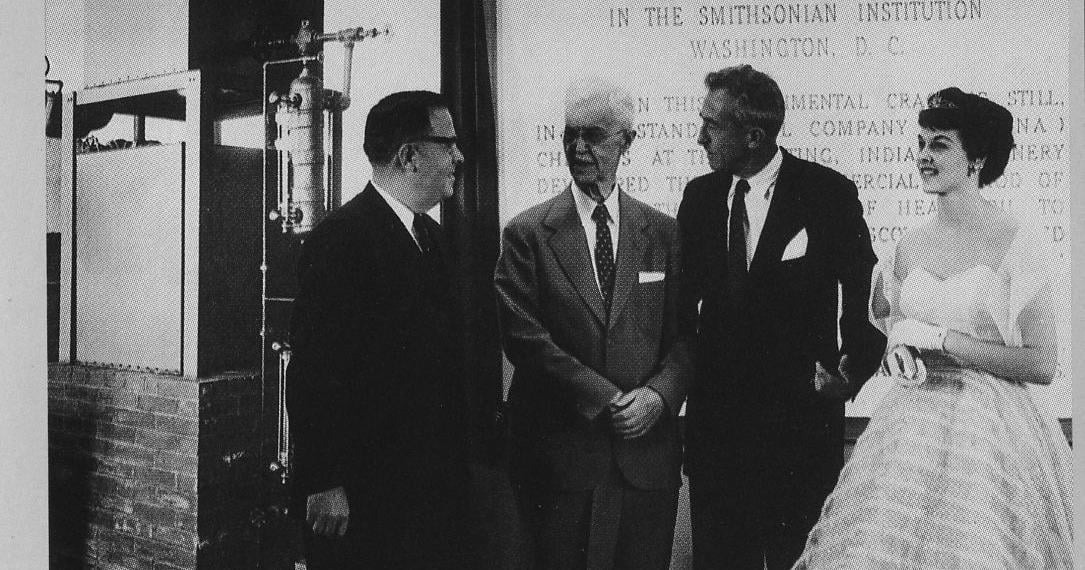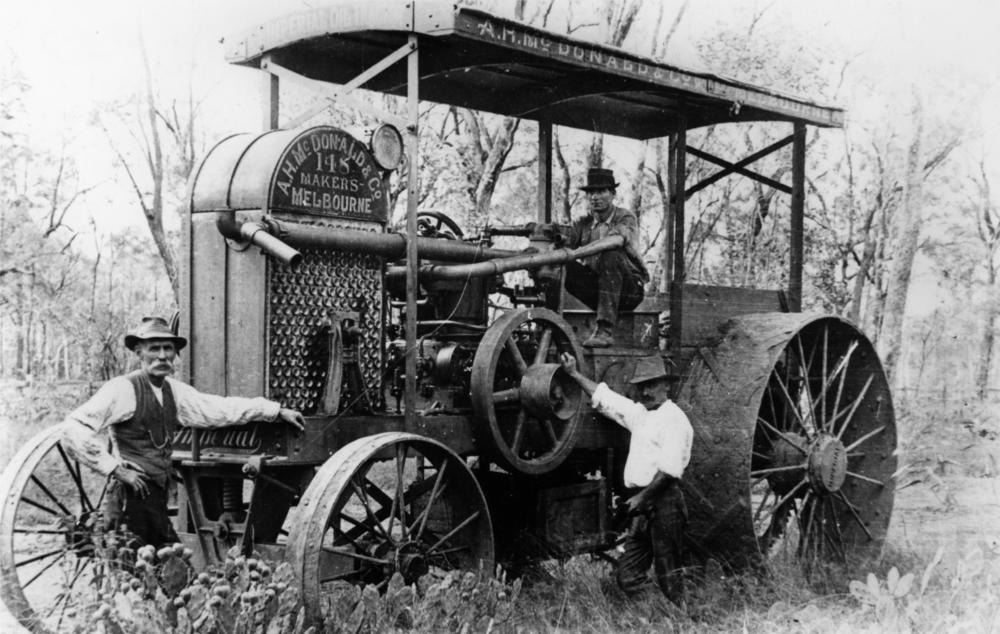9 Key Inventions From The Second Industrial Revolution That Transformed The World Forever
The Second Industrial Revolution, spanning from the late 1800s to the early 1900s, brought a wave of technological advancements that reshaped the world.
This era, which significantly impacted Europe, Great Britain, and especially the United States, was marked by rapid changes in industry and daily life.
Steel mills and chemical plants began producing vast amounts of goods, while the advent of electric light and power revolutionized everyday living.
Transportation and communication systems were transformed, connecting people and places more effectively than ever before. Mechanized equipment revolutionized agriculture on farms, turning it into a major industry.
During this transformative period, innovators took bold risks and pursued ambitious ideas. Whether developing groundbreaking inventions or improving existing technologies, their efforts led to substantial economic growth and the creation of vast fortunes for some.
1. The Air Brake

Before the Second Industrial Revolution, trains faced significant safety issues, particularly with braking. The process was cumbersome and prone to accidents, making it clear that a better solution was needed.
Enter George Westinghouse, a self-taught engineer who left college after just three months to focus on his inventive ideas.

In 1872, Westinghouse introduced a groundbreaking air brake system that transformed train travel. His invention used air pressure to control the brakes: when the engineer reduced the pressure, the brakes engaged smoothly and precisely.
This innovation drastically improved the safety and efficiency of trains, facilitating the rapid expansion of railroads across the country. Westinghouse’s air brakes played a key role in making rail transport a reliable and secure means of moving people and goods.
2. The Light Bulb

Thomas Edison, a towering figure in American innovation, made huge strides during the Second Industrial Revolution.
Known for a wide range of inventions, from the phonograph to the movie camera, Edison’s most transformative achievement was the development of the practical incandescent light bulb.
Edison’s breakthrough came with his idea to use a carbonized bamboo filament inside a vacuum bulb, which he then heated to produce light. He refined this design through extensive experimentation, creating bulbs that could last up to 1,200 hours.

His patent for the “electric lamp,” granted in January 1880, revolutionized lighting. This invention not only brightened homes and businesses but also shifted daily life from being governed by natural light to being defined by the clock.
3. Petroleum Refining

In the early 1900s, William Burton, a chemist at Standard Oil Co. in Indiana, pioneered a groundbreaking process for refining crude oil.
He devised a method to heat the oil to over 700 degrees Fahrenheit in a container. This intense heat broke the oil down into simpler, more valuable byproducts.
According to Scranton, Burton’s process was crucial: “No cracking, no interstate highways.”
His innovations provided a range of essential products, from fuel oil to gasoline and petrochemical basics, significantly impacting transportation and industry.
4. The QWERTY Typewriter Keyboard

The typewriter, a key tool in modern communication, was not the product of a single inventor but evolved through the efforts of several innovators from the mid-1700s onwards.
By the 1870s, practical typewriters began to emerge, largely due to the work of Christopher Latham Sholes.
In 1878, Sholes, a former journalist and customs inspector, introduced the QWERTY keyboard. This layout, designed to reduce finger strain and prevent jamming, quickly gained popularity.

Mark Twain famously used the QWERTY keyboard to type his 1883 novel “Life on the Mississippi,” potentially the first literary work composed on a typewriter.
While the exact origins of the typewriter are debated, Italian inventor Pellegrino Turri and Sholes played crucial roles in its development.

The typewriter’s influence extended beyond its era, paving the way for modern word processors and computers.
Today, the QWERTY layout remains ubiquitous, found on typewriters, smartphones, and various devices, thanks to its early adoption and the success of the Remington brand.
5. The Skyscraper

Chicago’s Home Insurance Building, finished in 1885, holds the distinction of being the first modern skyscraper thanks to its innovative use of a metal frame.
Designed by engineer and architect William Le Baron Jenney, the building utilized steel I-beams rolled at Carnegie’s Pittsburgh mill, which allowed for a taller structure without the heavy burden of traditional brickwork.
This innovation heralded the era of tall office buildings and skyscrapers that would transform urban landscapes across the country. The shift to steel frames not only changed the city skylines but also enabled higher population densities in urban areas.
6. The Tractor

Before mechanized farming, farmers had to grow extra grain to feed their horses and mules, which were essential for plowing and cultivating the land.
In the 1890s, steam-powered machines were in use, but they were bulky and hazardous, as sparks from the boiler could ignite surrounding fields.
John Froelich, an inventive mind from Iowa, solved this problem. With mechanic Will Mann, Froelich replaced the steam engine with a single-cylinder gasoline engine.

After testing this innovation in South Dakota, Froelich presented it to Iowa businessmen, who founded the Waterloo Gasoline Traction Engine Company.
Although it took time to gain traction, by 1914, the company’s Model R Waterloo Boy Tractor became highly successful. Gas-powered tractors significantly increased productivity and helped American farmers feed a growing population.
7. The Safety Razor

In the past, men had only one option for shaving: the straight razor, which required frequent sharpening with a strap. Given the hassle and danger of this method, many chose to simply grow a beard.
The game changed in 1895 when a traveling salesman named King Gillette came up with a revolutionary idea: a razor equipped with a handle that used a small, disposable metal blade. This blade could be easily replaced once it became dull.

Despite initial doubts from experts at MIT, King Gillette teamed up with MIT engineer William Emery, who successfully created a workable disposable blade. In 1901, Gillette and his partner Nickerson launched the American Safety Razor Company.
Their big breakthrough came in 1904 when Gillette received a patent for the safety razor with disposable blades, marking the start of a new era in personal grooming.
8. The Telephone

In 1876, Scottish-American scientist Alexander Graham Bell made history by demonstrating the first telephone. This invention transmitted sound, including the human voice, through an electric current.
Bell is widely recognized as the primary inventor, but Lewis Latimer, an American inventor and draftsman, also supported his work. Latimer played a crucial role by creating high-quality patent drawings for Bell’s telephone patent application.
Bell’s telephone worked by using two sets of metallic reeds and electromagnetic coils. Sound waves near one set of reeds caused it to vibrate, generating electrical currents in the connected coil.
These currents were then transmitted to the other coil, causing the second set of reeds to vibrate and reproduce the original sound.

The first successful telephone call occurred in Bell’s Boston laboratory on March 10, 1876. Bell famously called his assistant, Thomas Watson, saying, “Mr. Watson—Come here—I want to see you.”
Initially seen as a novelty for the wealthy, the telephone evolved into an essential household device by the mid-20th century, with billions of units worldwide in use.
9. The Wireless

The invention of the telegraph in 1844 revolutionized communication by allowing people to send messages instantly over long distances. However, connecting the sender and receiver still required miles of wires.
In the mid-1890s, Italian inventor Guglielmo Marconi improved upon this technology by using radio waves to transmit messages wirelessly.

Facing skepticism in Italy, Marconi moved to England and established a wireless telegraph company. By 1899, his technology could send messages across the English Channel and from ships at sea.
Marconi’s most remarkable achievement came in 1901 when he successfully transmitted a message across the Atlantic Ocean from Cornwall, England, to St. John’s, Newfoundland.
This success marked the beginning of global communication and paved the way for modern innovations like mobile phones and the Internet, which now connect billions of people worldwide.

